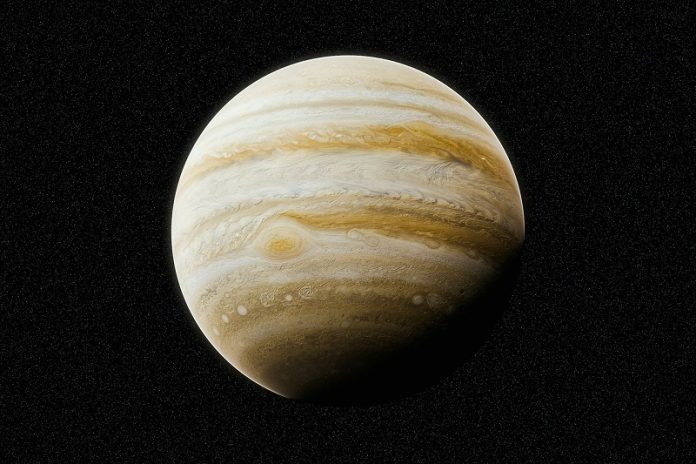
For the first time ever, scientists have seen how a powerful burst of solar wind slammed into Jupiter and dramatically changed its atmosphere.
This intense space weather event squashed Jupiter’s magnetic field and created a super-heated region stretching across half the planet—an area bigger than five Earths lined up side by side.
The event, which happened in 2017, was recently analyzed by researchers at the University of Reading.
They found that the solar wind—a fast-moving stream of charged particles from the Sun—compressed Jupiter’s magnetosphere, the invisible bubble created by the planet’s magnetic field that normally protects it from solar radiation.
This compression caused a huge area in Jupiter’s upper atmosphere to heat up to more than 500 degrees Celsius, far above its usual temperature of around 350 degrees Celsius.
Dr. James O’Donoghue, the lead author of the study, said, “This is the first time we’ve captured how Jupiter reacts to solar wind—and the results were completely unexpected.
It’s like the solar wind squashed Jupiter’s magnetic shield like a squash ball, creating a massive hot zone in its atmosphere.”
Jupiter is already an enormous planet—about 11 times wider than Earth—so this heated area is unbelievably vast.
The findings were published in Geophysical Research Letters and mark the first clear evidence that solar storms can have a major impact on the giant outer planets in our solar system.
To make this discovery, the scientists used a combination of data from the Keck Observatory in Hawaii, NASA’s Juno spacecraft, and computer models of solar wind behavior.
They found that a particularly dense wave of solar wind reached Jupiter just before their observations began, compressing the magnetosphere and triggering stronger-than-usual auroras at the planet’s poles.
The heat from these auroras spread unexpectedly toward the equator, creating a hot, glowing band around much of the planet.
Until now, scientists believed that Jupiter’s fast rotation would keep this kind of heating limited to the polar regions.
But this study shows that solar wind can spread energy far beyond those areas, changing the way heat moves through Jupiter’s entire upper atmosphere. It also suggests that other large planets—like Saturn and Uranus—might be more affected by the Sun than scientists previously thought.
Professor Mathew Owens, a co-author of the study, added that their solar wind model predicted the disturbance accurately. This helps researchers improve space weather forecasting—not just for other planets, but also for Earth, where solar storms can disrupt satellites, GPS, and power grids.
By studying Jupiter, scientists are gaining valuable clues about how space weather works—and how to protect our planet from its effects.
Source: University of Reading.



